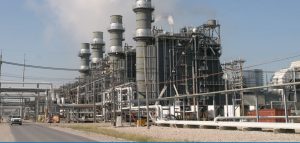Discontinuous (shock or pop) steam blowing
With the discontinuous method, the pressure in the steam generator is increased to a certain maximum whereby the required pressure is reached, after which a temporary blow-out valve is opened quickly (<10 seconds). During this pressure drop, the required K-factor is achieved for a short period of time. Due to the release of the pressure and temperature, the steam generator must be restarted.
This steam blowing cycle depends on the cleanliness of the system and the required start-up and shutdown of the steam generator. Normally, no more than one cycle can be performed daily to ensure adequate cooling of the system.
Continuous steam blowing
With continuous steam blowing, no high pressure build-up is required to achieve the K-factor and the K-factor can be achieved for a longer period of time. This makes it possible to calculate the required steam blowing time based on the K-factor and the system properties.
The continuous steam blowing has several advantages over the discontinuous steam blowing. These advantages are not only limited to the possibility of achieving the K-factor for a longer period of time, but also the system load is within the design parameters and the noise level is limited through water injection to below <90dB.
Due to its many advantages, the continuous steam blowing method is the preferred method by Vecom.
Advantages of discontinuous steam blowing
- Due to the higher pressures in the system there is more thermal expansion;
- No gradients to large diameters required from the steam blowing line to the silencer;
- No extra process/drinking water required for water injection system compared to continuous method.
Disadvantages of discontinuous steam blowing
- The required K factor is achieved for a very short period of time (a few minutes) during the steam blowing cycles;
- Greater load on the system due to rapid decrease in pressure and temperature;
- Steam blowing is performed outside of the design parameters of the system;
- Larger amounts of demineralized water required compared to continuous steam blowing;
- Temporary steam blowing piping made of high-alloyed steel with higher pressure stages (PN63 or PN100) required (higher costs compared to continuous method);
- Temporary blow-out valve required (higher costs compared to continuous method);
- The steam generators must be completely restarted before the following cycles can be started.
Advantages of continuous steam blowing
- The required K-factor is achieved for a longer period of time (depending on demineralised water availability) during the steam blowing cycles;
- Lower load on the system due to gradual and uniform increase in pressure and temperature;
- Steam blowing is performed within the design parameters of the system;
- Smaller amounts of demineralised water needed compared to discontinuous steam blowing;
- Temporary steam blowing piping can be made of steel with a pressure stage PN16 instead of high-alloyed steel with pressure stages> PN16 (cost-saving compared to discontinuous method);
- No temporary blow-out valve required (cost-saving compared to discontinuous method).
Disadvantages of continuous steam blowing
- Larger and gradients to larger diameters of temporary piping required from the steam blow line to the water injection system;
- Extra process/drinking water required for water injection system compared to discontinuous method.
